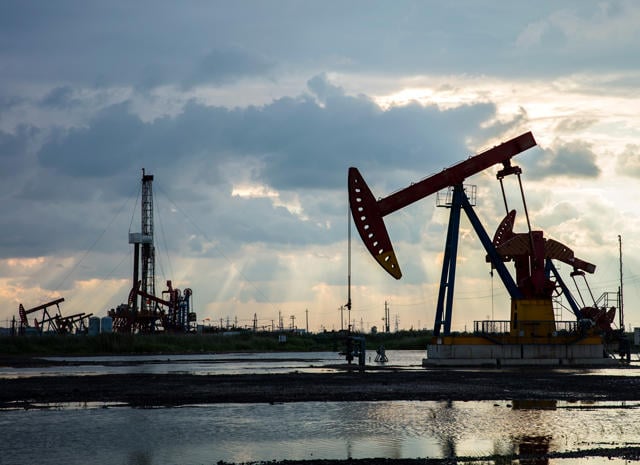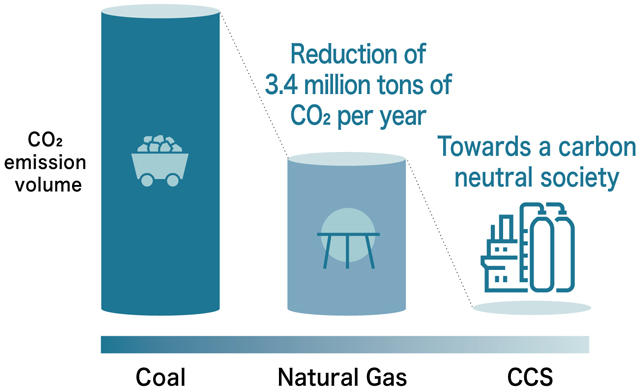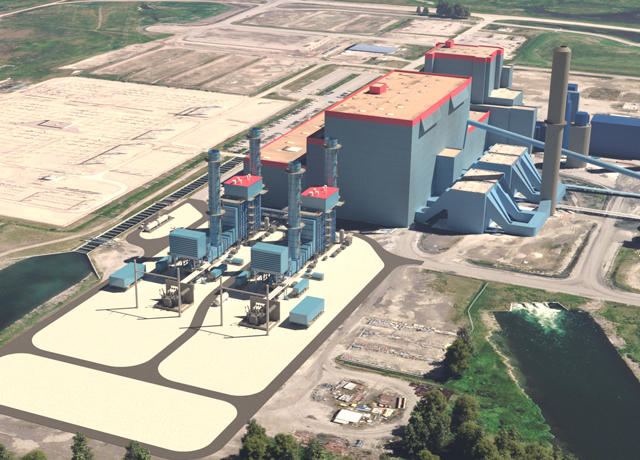INSIGHTS
Shifting from Coal to Natural Gas, Creating a New Model for Sustainable Power Generation

Alberta, Canada, Where Abundant Natural Resources and Modern Cities Coexist
-

-
Alberta is a province in western Canada, home to the Canadian Rockies and the bustling cities of Calgary and Edmonton. The province is blessed with diverse landscapes that include beautiful forests, lakes, and vast prairies. There are six UNESCO World Heritage Sites in the province, including Banff National Park and Jasper National Park, as well as many other famous scenic areas. The region's beautiful scenery continues to attract people. The province of Alberta is about as large as France, with a total area of around 660,000 square kilometers and a population of roughly four million people. With the largest production of oil and natural gas, Alberta is one of the richest provinces in terms of underground resources in Canada, which is a country known for its abundant natural resources. Edmonton, the capital of the province, is the transportation hub of western Canada and is a key city for the country's energy industry. Since the discovery of massive oil reserves in 1947, urban development has also accelerated, and Edmonton has become a pillar of the provincial economy.
Oil-producing Province Focuses on Decarbonization
-
Canada is an advanced energy country, with about 80% of its electricity coming from zero-emission sources.(Note1) Among these, hydroelectric power accounts for about 60% of total power generation. The country has been taking full advantage of its broad geography and abundant rivers and lakes, enabling it to supply electricity at low cost. Canada's per capita electricity consumption is the highest in the world, far exceeding that of the U.S., South Korea, and Japan. As the largest oil-producing province in the country, Alberta's provincial government has made a declaration that it will proactively implement climate change measures in the energy industry, which supports the province's economy. The government has implemented regulations on gas emissions in stages. In 2015, Alberta passed a regulation requiring all coal-fired power plants in the province to either convert to natural gas or cease operations by 2030.(Note2) In 2019, the province introduced "Technology Innovation and Emission Reduction Regulations" (TIER).(Note3)
- 1Power coming from renewable energy sources such as nuclear, solar, wind, and hydroelectric power.
- 2Government of Alberta, "Phasing Out Emissions from Coal" https://www.alberta.ca/climate-coal-electricity.aspx
- 3Copyright (C) Japan Oil, Gas and Metals National Corporation. All Rights Reserved.
-

Upgrade Expected to Increase Power Output by 70%,
Creating the Most Efficient Natural Gas-fired GTCC Power Plant in Canada
-

-
In December 2020, Mitsubishi Power received an order for two M501JAC gas turbines for the Genesee Power Station owned by Capital Power, a Canadian power generation company. This order was for the upgrade of Genesee Unit 1 and Unit 2, which were originally installed in 1994 and 1989, respectively. By combining our best-inclass gas turbines and exhaust heat recovery boilers with the existing steam turbines, these will become the most efficient natural gas-fired gas turbine combined cycle (GTCC) power plants in Canada with a generating efficiency of over 64%. As a result of this upgrade, the combined output of the two units will have the capacity to increase from 800 MW to a total potential output of almost 1,400 MW, net to grid. Unit 1 and Unit 2 are scheduled to start operating in mid-2024 and are expected to help meet the region's electricity demands as large-capacity, high-efficiency power generation facilities.
Outcomes
3.4 Million Ton Reduction in CO2 Emissions Per Year,
Power Generation Technology Moving toward Net Zero
-

-
The conversion to these gas turbines will bring significant benefits to Alberta's energy landscape.
First, the introduction of the GTCC system will make it possible to switch from coal to natural gas, which emits far less CO2 than coal. This will reduce CO2 emissions by 3.4 million tons per year and will meet TIER standards. The carbon emissions intensity of using natural gas as a fuel source will decrease by approximately 60% when compared to emissions when Units 1 and 2 were running on coal.
-
Capital Power is planning to add approximately 260 MW of solar and wind energy to its North American fleet by the end of 2022. While the addition of renewable energy is important, the output is affected by the seasons and changing weather conditions, resulting in the need for highly efficient and reliable power sources to realize a stable supply of electricity. The M501JAC gas turbines use the best aircooling system in its class. As such, they need less start-up time compared to conventional systems, and that enables greater flexibility, when being used for balancing with electricity from renewable energy sources, to maintain a stable and reliable supply of electricity. Further, Capital Power is evaluating the addition of Carbon Capture and Sequestration (CCS) to help further reduce carbon emissions. This will allow the Genesee Unit 1 and Unit 2 to achieve near net zero CO2 emissions and become one of Canada's cleanest large-scale thermal power generation facilities.

Solutions
Upgrading to a State-of-the-art Plant, Effectively Utilizing Existing Facilities
-
-
-
For this repowering project, the units will combine best-in-class Mitsubishi Power air-cooled combustion turbines and heat recovery steam generators with the existing steam turbine generators, which will be refurbished and utilized effectively. The main components of the gas turbines were manufactured at the Takasago Machinery Works in Japan which has been producing high performance gas turbines with the world's highest thermal efficiency since 1962. The assembly of the main unit will be completed at the Savannah, Georgia plant of Mitsubishi Power Americas, our local representative.
-
Client Testimonials
-
-
-
-
Brian Vaasjo
President and CEO, Capital Power Corporation
Capital Power is following a strategy toward a low-carbon future with a target to be net carbon neutral before 2050. Paired with the Coal to Gas Conversion of Genesee 3, the repowering of Genesee Units 1 and 2 with Mitsubishi Power technology will position the Genesee station to be off-coal in 2024. The move will deliver 3.4 megatonnes of annual carbon emission reductions, and will put the facility in position for additional carbon emission reductions in the future via CCS.
-
-



